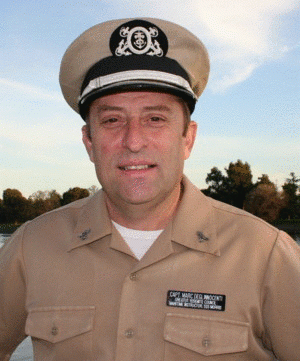My first sea time letter was dated in 1974 as a crew member on board a USCG certified passenger vessel. Even though I'm a bit landlocked in my retirement now, I still contribute to the maritime industry through my technical maritime articles and as an expert witness for courts of law.
Here is some of my sea time through the years in a semi chronological order. A lot of it was bunched into group types, and not all of it was listed. I'm not applying for a job, so this page is just to give you a taste of the different types of ships that I served on.
The largest vessel I ever served on was the MV President Adams. It was a container cargo ship. I took two cruises with her, and my jobs were the deck rotation watches in the pilot house. I worked directly with the third mate with chart plotting, helm, lookout, radar watch, and systems monitoring. My off watch time was spent in the engine room shadowing the chief engineer. I once was a qualified engineer on smaller passenger vessels, and the engine department has always been an interest area of mine. It has always been my belief that a good master should have work experience in all aspects of nautical life.
In both volunteer and paid professional positions, I was a USCG licensed master of various and numerous Sea Scout vessels both power and sail. Vessel lengths varied widely from simple skiffs to a 180 foot power vessel. My initial sea time was on a 125 foot power vessel and then 95 and 90 foot power vessels. I trained both youth and adults including two separate US Navy Reserve units as well as other youth groups such as Sea Cadets.
I worked on San Diego bay and the Pacific Ocean just north of Mexico for over six years with one boating company. It was a great job with quite a bit of varied vessels and varied jobs. There was whale watching in the ocean, historical and naval tours of the bay, dinner cruises, special charters, water taxi work, and even running the commuter ferryboat on a tight schedule. There were about twenty licensed masters working there at the time, and I was one of six captains qualified to operate all vessels owned by Flagship Cruises.
I also worked for six years for another boat company. That was the Napa Valley Riverboat Company. They had a little authentic propulsion paddlewheeler. It was a triple decker 76 feet in length. It was a handful piloting it up and down the narrow Napa River with its associated currents, snags, sandbars, fishing boats, and even low hanging tree branches! She had a flat bottom and a huge sail area that the wind used to have its way with. The pilot house was right up forward practically sitting on the bow, and I spent half the ime looking aft to see how she was actually heading. She was slow to answer her rudders, and slow to check her swing. I've handled much larger vessels in closer quarters easier than this little passenger vessel.
The owners were driving home one dark night when they were hit by a drunk driver. Apparently she had been touring wineries all day and drinking her fill as she went. When it was time for her to go home, she got on the wrong side of the freeway and hit them head on. That ended the company.
I have some sea time on some great work boats too. I was a deckhand on quite a few different types of tug boats, cargo and fuel barges, dead tows, and even a captain on a supply vessel that delivered personnel and deck cargo. The tug boats were both the conventional type and tractor tugs that were highly maneuverable. All of the tug boats companies and the supply vessel company were under contract with the Masters, Mates, and Pilots union.
I was the licensed master of the 85 foot research vessel Inland Seas. This was a converted U.S. Air Force Air/Sea Rescue vessel owned and operated by MSI. You can read more about my work at MSI on the Home Page.There's even some info there about working on board the 110 foot research vessel Point Lobos for MBARI.
After I earned my own masters license, I worked for Commodore Cruises and Evens. I was soon promoted to port captain. As the port captain I was responsible for hiring and training the captains and crew. I made sure that all the vessels in the fleet were properly maintained and certified too. Need I go on and on? The job consisted of a lot of scheduling, training, maintenacne, time management, ordering, coordinating, and cruising. It was a great deal of work at all hours of the day and night.
I was a deckhand and master trainee on a fleet of San Francisco Bay tour boats, and then a licensed master for that fleet. Blue & Gold Fleet was also under contract with the Masters, Mates, and Pilots union. This job gave me a lot of the recent sea time that I needed for my own license.
I was hired by Hornblower Dining Yachts as an experienced first officer for their 102 foot passenger vessel operating on San Francisco Bay. I later qualified as a first officer on all of their other vessels operating on the bay. Those were all of lesser tonnage, but had their own unique operational characteristics to learn.


